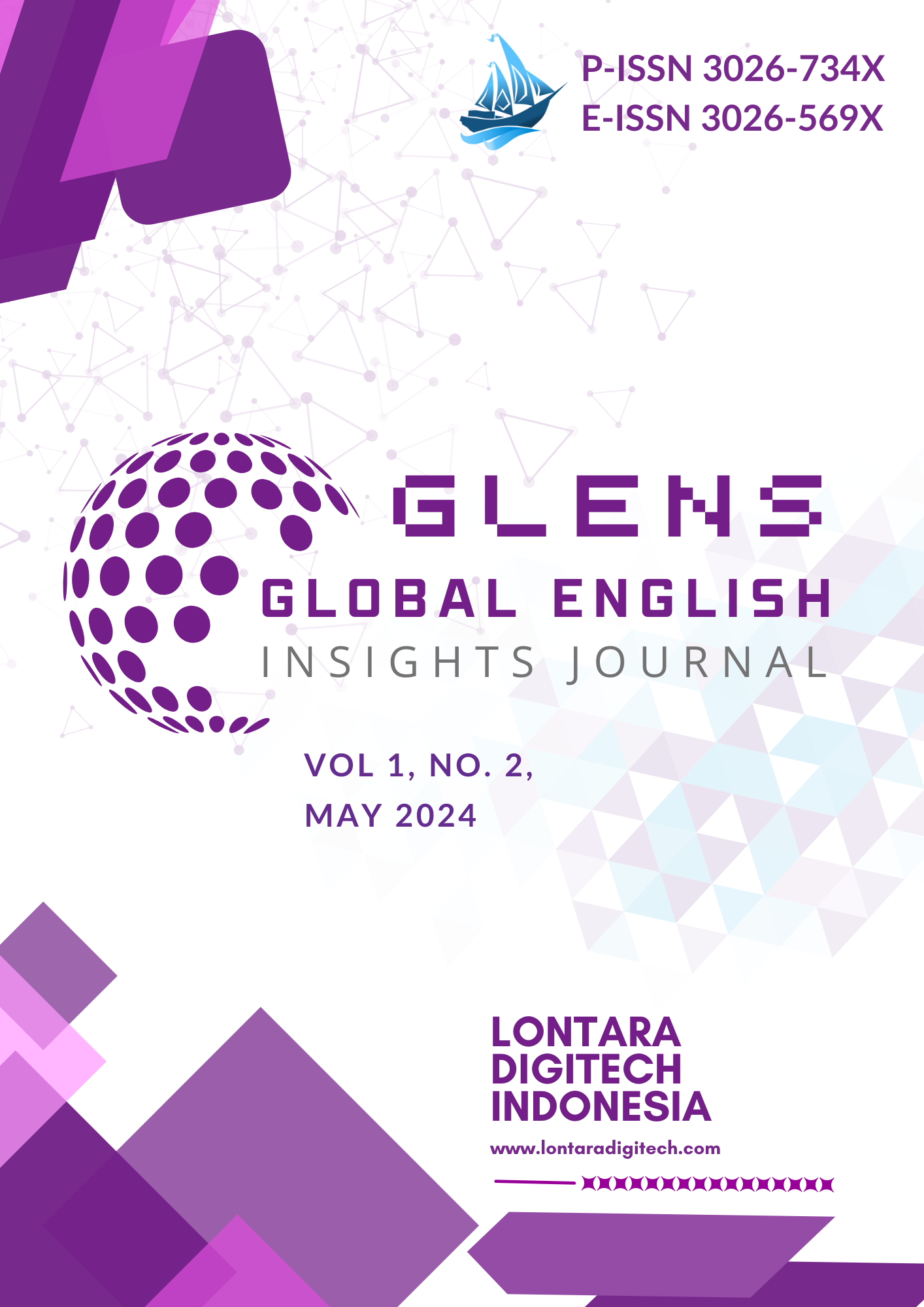Unveiling Wordsworth's Daffodils: A Semiotic Tapestry of Signs and Symbols
DOI:
https://doi.org/10.61220/glens.v1i2.375Keywords:
Charles Sanders Peirce, Poetry, Semiotic Analysis, Signs and Symbols, William Wordsworth’s PoemAbstract
This research aims to identify and analyze signs and symbols in William Wordsworth’s poem I Wandered Lonely as a Cloud. This study employs a descriptive qualitative research design through a semiotic approach to investigate the function of signs and symbols in poetic discourse. The data in this research was collected from Wordsworth’s. I Wandered Lonely as a Cloud as the primary data source, while the secondary data sources are books, articles, and other online sources that support the primary data. The obtained data were analyzed using Charles Sanders Peirce’s semiotic model, which consists of an icon, index, and symbol. The data analysis was conducted in three stages: classification, display, and verification. The result of this research shows that the poem employs various phrases, which can be categorized as icons, indexes, and symbols. The signs function to surpass linguistic barriers and convey significant insights about the human spirit and its connection to the natural world. These can also serve as a reminder that even the most basic words, when skillfully composed and infused with symbolic significance, can have a lasting effect on readers, encouraging them to delve into their feelings and establish a stronger bond with the world.
References
Anindita, K., Satoto, S., & Sumarlam, S. (2017). Diction in Poetry Anthology Surat Kopi by Joko Pinurbo as A Poetry Writing Teaching Material. International Journal of Active Learning, 2(1), 39–49. https://www.learntechlib.org/p/208704
Aryangga, A., & Nurmaily, E. (2017). Women’s Power and Stereotype Denial in Pocahontas Movie. TEKNOSASTIK, 15(1), 46. https://doi.org/10.33365/ts.v15i1.19
Asih, D. W. (2016). A Semiotic Analysis of the Advertisements of Bukalapak Compared to Tokopedia and Elevenia [Undergraduate Thesis]. Universitas Diponegoro.
Asrifan, A., & Dewi, A. C. (2023). A Semiotic Analysis of Robert Frost’s Poem Love and A Question Based on Charles Sander Peirce’s Triangle Theory. International Research Journal on Advanced Engineering Hub (IRJAEH), 1(1), 6–18. https://doi.org/10.47392/IRJAEH.2023.002
Baltaci, A., & Balcı, A. (2017). Complexity Leadership: A Theorical Perspective. International Journal of Educational Leadership and Management, 5(1), 30. https://doi.org/10.17583/ijelm.2017.2435
Chandler, D. (2022). Semiotics: The Basics. Routledge.
Fadaee, E. (2011). Symbols, Metaphors and Similes in Literature: A Case Study of Animal Farm. Journal of English and Literature, 2(2), 19–27.
Firth, R. (2013). Symbols (Routledge Revivals): Public and Private. Routledge.
Greene, R., Cushman, S., Cavanagh, C., Ramazani, J., & Rouzer, P. (2012). The Princeton Encyclopedia of Poetry and Poetics. Princeton University Press.
Johansen, J. D. (2002). Literary Discourse: A Semiotic-Pragmatic Approach to Literature. University of Toronto Press.
Johansen, J. D., & Larsen, S. E. (2005). Signs in Use: An Introduction to Semiotics. Routledge.
Klarer, M. (2013). An Introduction to Literary Studies. Routledge.
Lorino, P. (2014). Charles Sanders Peirce (1839–1914). Oxford Handbook of Process Philosophy and Organization Studies, 143–165.
Ngestirosa, E. (2018). Redefining Hybridity of Chicano Literature in Jimenez’s Fictions. International Journal of Diaspora & Cultural Criticism, 8(2), 293–319. https://doi.org/10.15519/dcc.2018.06.8.2.293
Saussure, F. de. (1974). General Course in Linguistics. Baskin (Trans.), J. Culler (Ed.). London: Fontana.
Sebeok, T. A. (2001). Signs: An Introduction to Semiotics. University of Toronto Press.
Susanti, S. I., Lestari, I. W., & Wafa, K. (2023). Analyzing Deixis of English Speech by Kim Namjoon (BTS) at the United Nations. GLENS: Global English Insights Journal, 1(1), 26–31. https://doi.org/10.61220/glens.v1i1.2023a4
Downloads
Published
Citation
Issue
Section
License
Copyright (c) 2024 Sulistiawati, Nur Hikmah, Muhammad Hasbi (Author)

This work is licensed under a Creative Commons Attribution-ShareAlike 4.0 International License.



















 Email: journalglens@gmail.com
Email: journalglens@gmail.com
